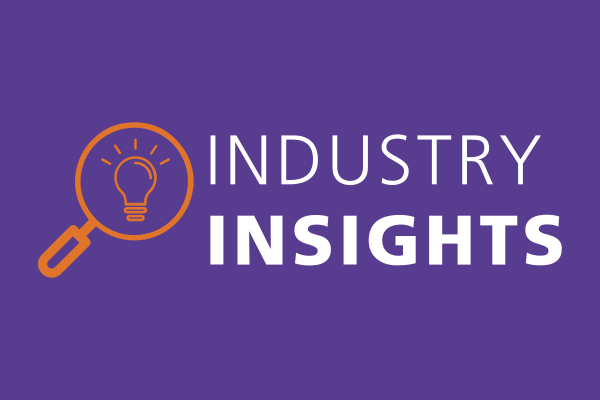While there’s little doubt that Americans today are divided, most of us support working with those who hold different beliefs. And that’s something nonprofits are increasingly trying to facilitate.
At the Council on Foundations, we’re collaborating with the New Pluralists and Philanthropy for Active Civic Engagement (PACE) on a three-part report series exploring philanthropy’s investment in “connecting and collaborating across differences.” We use this phrase to refer to a broad range of activities and investments such as belonging, bridging, building common ground, and conflict transformation. This includes countering polarization, combating hate, encouraging racial healing, advancing equity, and fostering an inclusive democracy.
We know that for this work to continue, more organizations need to know how to implement it. Here are three takeaways from the case studies in our latest report to help you engage in bridging divides.
1. Hold your plans with loose hands
Tensions were high in Buffalo after a mass shooting Black residents left 10 dead and three injured in May 2022. Backed by the New Pluralists, Resetting the Table (RTT) stepped in with a plan for training ideologically and racially diverse local leaders to discuss issues together. It turned out, however, that local leaders weren’t ready to interact across such intense divides.
RTT decided to redesign the program to focus first on helping different groups, including conservative white evangelicals and progressive community leaders of color, work through their own internal divisions. As people experienced the work in their own training groups, they became more willing to engage across bigger divides. This led to joint action on violence prevention, food access, and more.
If RTT hadn’t been willing to pivot, knowing it would delay the project, it wouldn’t have succeeded in working across differences. Even well-designed plans fail in the face of human emotions and the desire to retreat to familiar patterns of thinking. Expect to run into road bumps. Adopt flexible timelines and set realistic expectations with funders and grantees, knowing you ultimately aren’t in control of the pace of change.
As part of your program design, be prepared to cede some control to participants. For example, when Trust for Public Land, funded by the Walmart Foundation, paired diverse community members to plan local park events together, the trust left the participants to decide on goals, choose a location, invite their networks, and create a program that would promote friendly interactions. The program was successful because the participants knew their communities best and were able to interact across differences in ways that were comfortable for them. Involve your organizational or community partners in the decision-making process when appropriate, even if this introduces unpredictability. The result may be more creative, authentic, and stronger than you could have imagined on your own.
2. Make room for relationship building and patience
The work of bridging divides is inherently relational, and there are no shortcuts when it comes to building relationships. Especially when entering tense spaces or working with polarized groups, you must start by listening, establishing rapport, and forging genuine connections. As Melissa Weintraub, RTT’s co-founder and co-CEO, put it, “relational work is not a programmatic output.” Build time and resources into your program design for relationship building. Without this strong relational foundation, your work will crumble when difficult conversations arise.
Because relationships are built over time, and sometimes in a non-linear fashion, they require patience and longer timelines. StoryCorps’ program to increase empathy between politically opposed individuals by facilitating conversations centers patience, starting with its name: One Small Step.
It may take months or years to see the change you seek. But this one small step opens the door to seeing our shared humanity through new relationships. Deep-rooted divides are bridged in the same way they are formed—in relationship, slowly, over time.
3. Measure impact and success in new ways
In some cases, like the Rockefeller Foundation’s work to coordinate efforts to increase COVID-19 testing capacity, measuring impact is relatively straightforward. In other cases, like the Lancaster County Community Foundation’s (LCCF) Bridge Builder’s Program, grants were sometimes directed to programs with difficult-to-measure results.
One of the biggest challenges of connecting and collaborating across differences is that changes in perceptions and attitudes aren’t easy to measure. As a result, grantees can feel pressured to simplify a complex, abstract program into concrete outcomes, while funders struggle to see the ROI of their grants.
To change this dynamic, it’s important to choose measurements that fit your program, even if that means a break from precedent. Surveys and interviews that track changes in perceptions are often helpful, and sometimes a positive outcome means a changed attitude rather than an action. As LCCF executive vice president Tracy Cutler noted: “While it’s hard to have measurable outcomes today, it’s a longitudinal investment that we believe will yield real impact in our community over time.”
There is plenty of room for growth in this field of working across differences, and we can collectively identify best practices and develop assessment strategies that serve grantmakers, grantees, and individuals impacted by the work. Together, we can work toward seeing our differences as assets.
Photo credit: Bruce Muhlbradt, courtesy of Trust for Public Land
The post It’s possible to work across differences: Here’s how appeared first on Candid insights.

